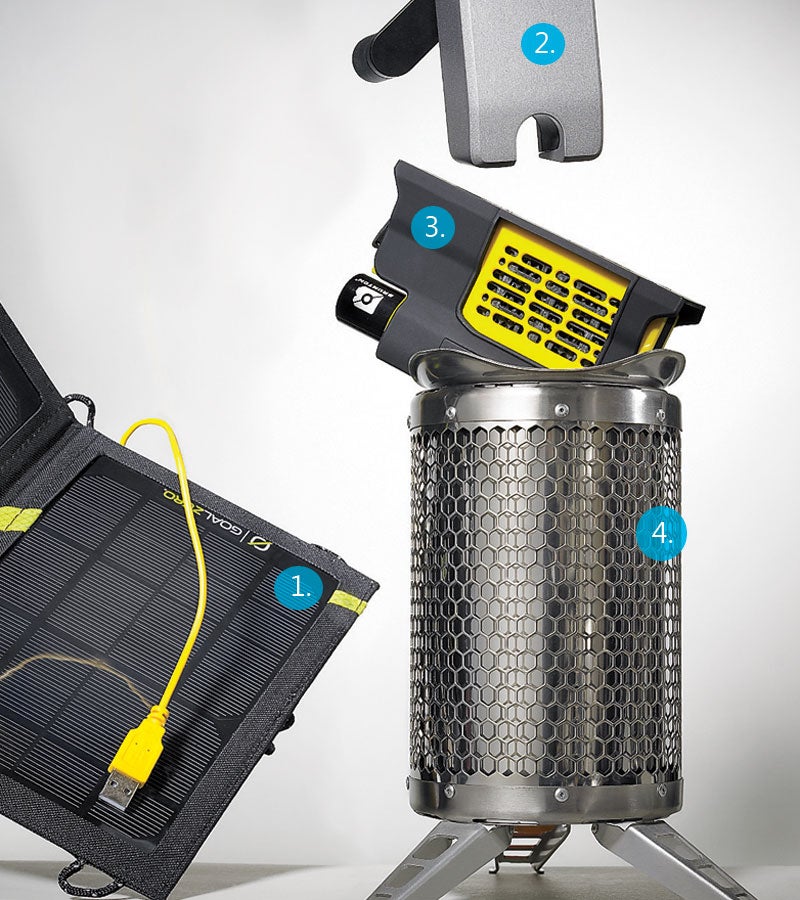Every few months, another travel-ready charger appears that’s intended to replenish your mobile phone when you’re miles from the nearest wall socket. Be it solar, wind, or hydrogen, the devices work by converting energy to electricity and charging a USB-connected handset in real time. (They can also store power in an internal cell or an external battery pack.) Most generate enough juice for a few clutch texts or calls, and that makes them potential life-savers whether it’s an off-the-grid vacation or Hurricane Katrina. We paired a dozen of the gadgets with a Samsung Galaxy SIII. Some worked faster than others; these four stood above the rest.
1. Goal Zero Nomad 7
How It Works: The magazine-size panel weighs less than a pound and is perforated with eyelets, so it can be hung from a branch or strapped to a backpack. When it’s exposed to direct sun, you can either connect your phone directly or fill an optional battery pack ($40) that, once charged, can be tapped after sunset. It’s the . ($120)
Charge Time for One Call: 12 minutes
For Full Power:6.5 hours
X Factor: Partly cloudy with a chance of rain.
2. Etón Boost-Turbine 4000
How It Works: This kinetic-energy generator uses magnets, a gear box, and mechanical motion—a hand crank—to charge an internal battery. It’s the with a two-way USB port: power up the battery from an electrical socket before leaving the house and it’s good for two full cell-phone re-ups. Start cranking when the stored power is exhausted. ($80)
Charge Time for One Call: 6.5 minutes
For Full Power: 3.8 hours
X Factor: Since it’s human powered, the BoostTurbine is the most reliable we tested for quick charges, but don’t plan on generating enough juice for a full battery.
3. Brunton Hydrogen Reactor
How It Works: The prototype we tested looked like a smaller version of the canisters used to fuel camp stoves, except that . Twist on a 2.3-ounce bottle and the gas is slowly released, flowing past a platinum catalyst that separates the hydrogen ions from the electrons. The resulting electricity is transferred by USB. ($150)
Charge Time for One Call: 10 minutes
For Full Power: 6.1 hours
X Factor: Each refillable canister costs $15; run out and you’re on your own.
4. BioLite CampStove
How It Works: This converts heat to electricity through a thermoelectric generator. The energy is transferred via USB and excess is stored in an internal battery. Bonus: An optional grill ($60) lets you sear steaks while your phone feeds.
Charge Time for One Call: Eight minutes of hot fire.
For Full Power: Four hours
X Factor: It chews through wood rapidly, so gather plenty before igniting.


